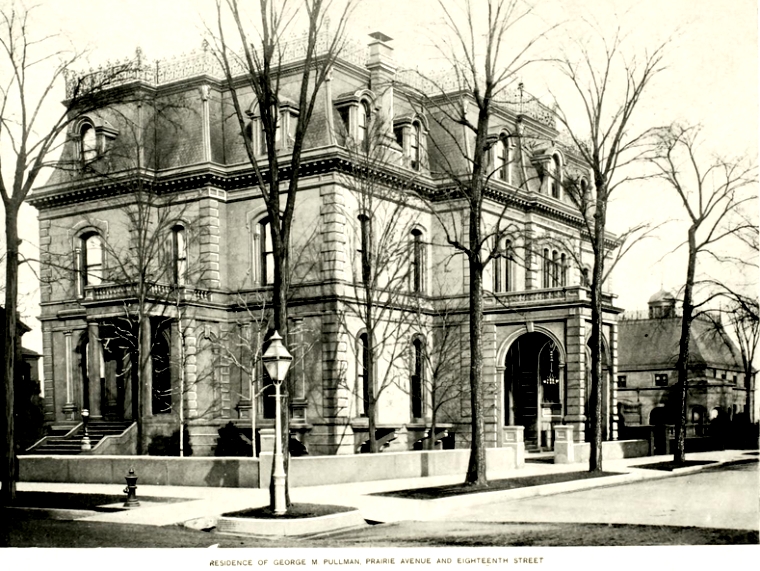In the late 1800s millionaires were nearly as scarce as billionaires are today. Prairie Avenue’s chief claim to fame dates from this era. The mansions of multimillionaires such as Marshall Field, Philip Armour and George Pullman lined both sides of Prairie Avenue near 20th Street.
This trend started soon after the Great Fire of 1871 burned the downtown mansions along Michigan and Wabash Avenues. According to One Hundred Years of Land Values in Chicago, Prairie Avenue reached its peak around 1890, then started declining after 1900.
Factors cited in the decline are:
- Improved transportation, including railroads and automobile, allowed the millionaires’ descendants to spread out to other locations such as North Lake Shore Drive, suburban Lake Forest and Astor Street—the subject of the next post.
- The rise of the apartment building with modern features such as central heating and janitorial service.
- The growth of the nearby slums, industrial areas and vice districts.
- The death of many of these prominent men—leaving behind their widows—some of whom continued to live on Prairie Avenue into the 1950s.
Prairie Avenue currently starts just south of Roosevelt Road (1200 S.) and extends south into the suburbs. Its name is usually attributed to its origins as an Indian trail from Chicago to the great Midwestern prairies.
Although today Prairie Avenue is sometimes called “Millionaires' Row,” the earliest use of the nickname I can find is an October 5, 1919 Chicago Tribune article about the availability of many of the mansions. The article did note that many well-known families still lived there. The Tribune as early as 1911 also dubs far north suburban Lake Forest as “Millionaires' Row.”
Chicago Public Library has a number of sources of information on Prairie Avenue. Prairie Avenue: An Annotated Bibliography is a particularly good place to start your research. The Encyclopedia of Chicago also has a good article on Prairie Avenue.




Add a comment to: Chicago’s Prairie Avenue: Millionaires’ Row